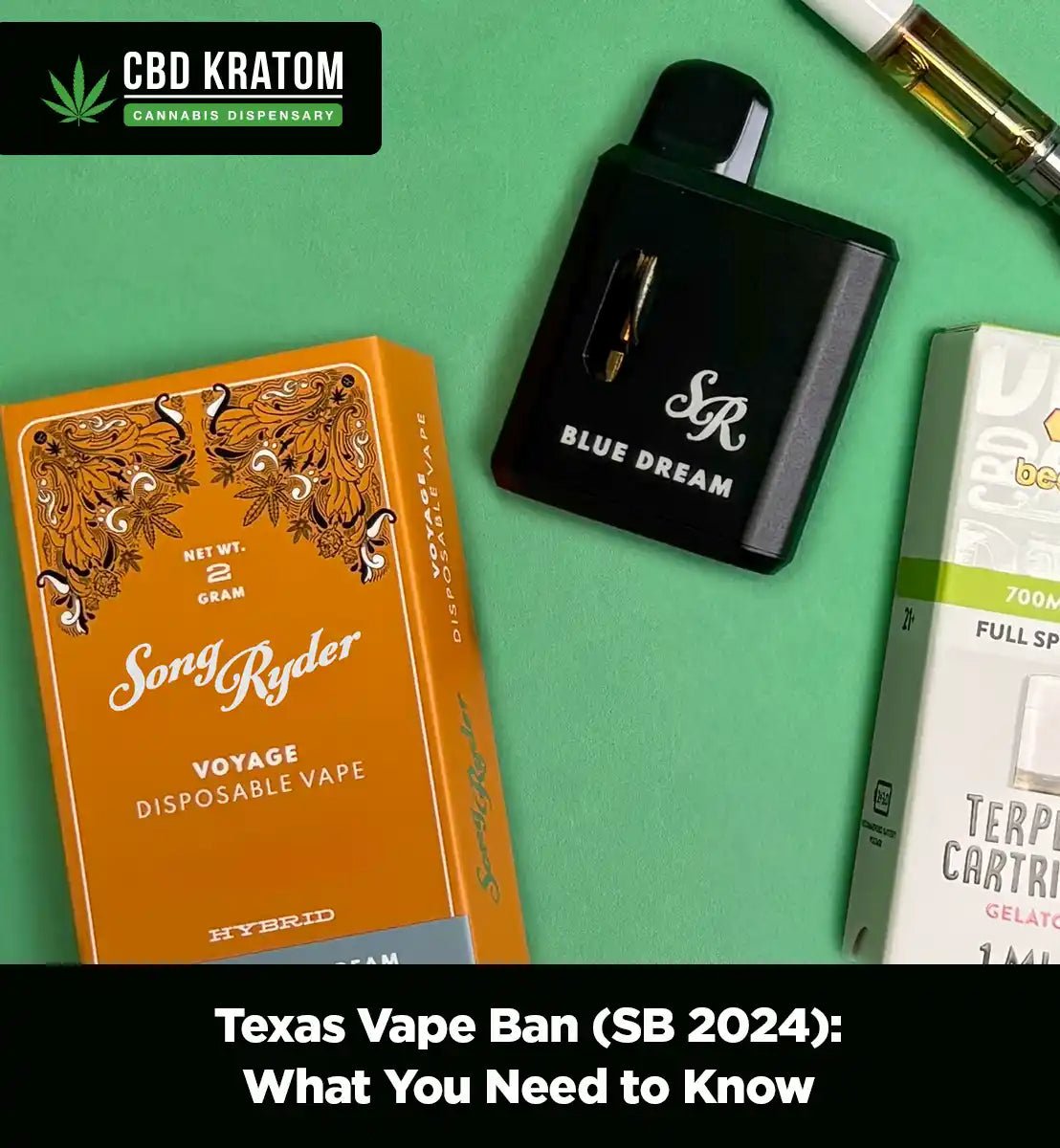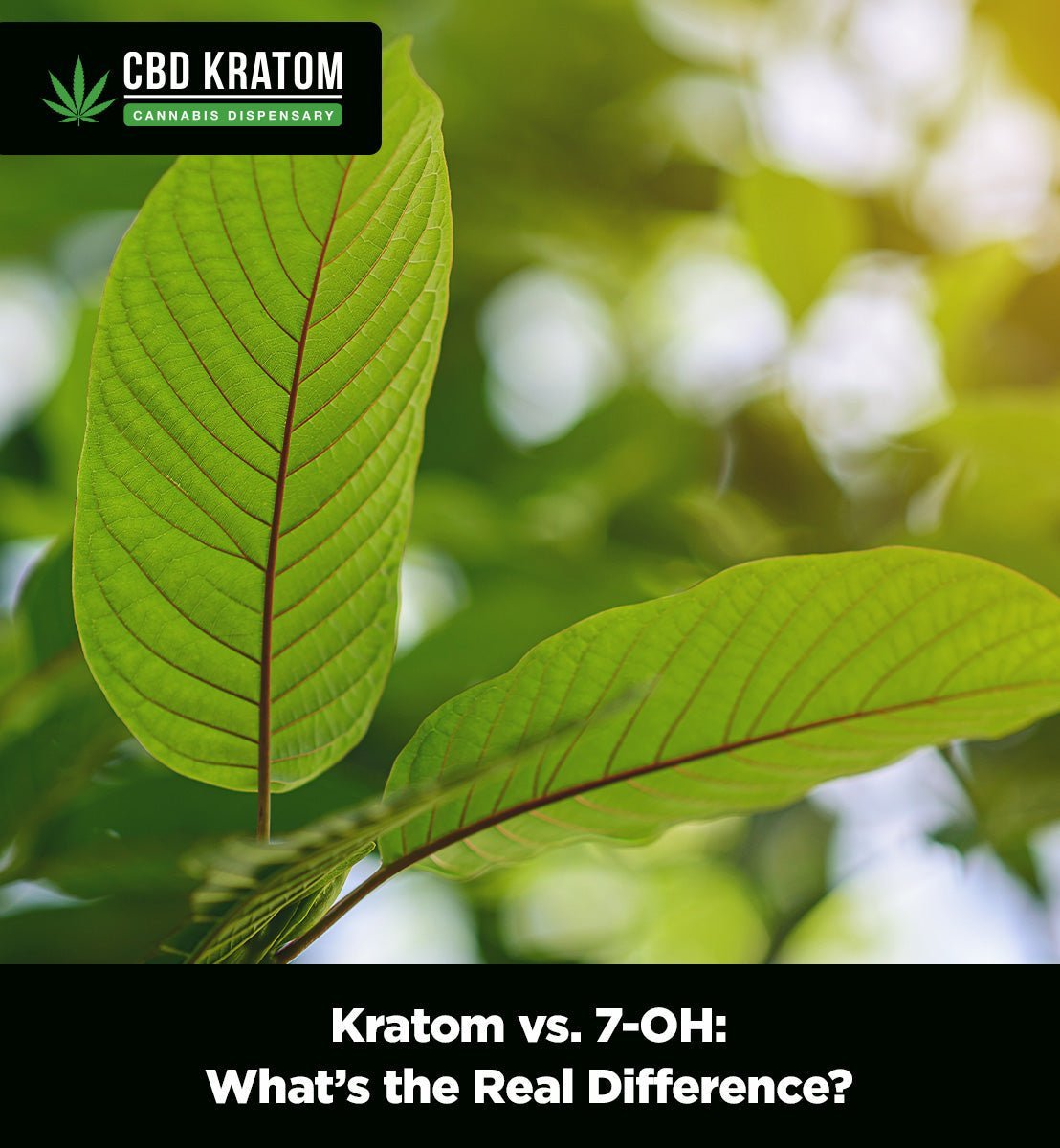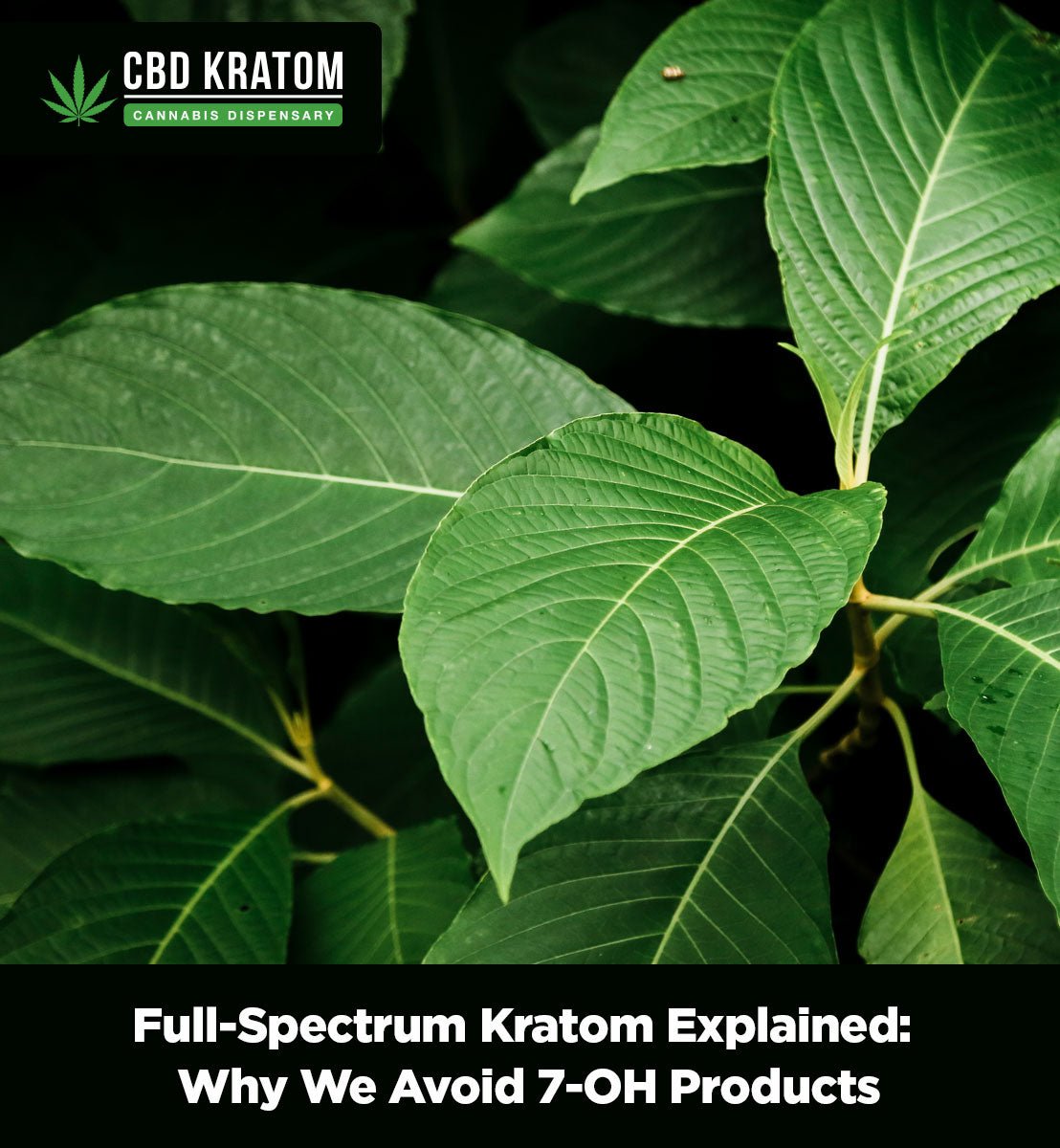
Your Trusted Guide
CBD Kratom Glossary of Terms
Your trusted guide to understanding cannabis, kratom, kava, mushrooms, and more.
General Terms
Capsules
Convenient, pre-measured servings of powdered or extracted plant compounds enclosed in a dissolvable shell. Capsules support consistent serving sizes across cannabis, kratom, kava, and mushroom products.
Consumption Method
The way a product is used or absorbed by the body. Common consumption methods include ingestion (capsules, edibles), sublingual (under the tongue), inhalation (vaping, smoking), and topical application (patches, creams). The choice of method influences onset time and effect duration.
Edibles
Food and beverage products infused with plant-based compounds. Popular in cannabis, mushroom, and kratom categories, edibles offer a delayed onset and longer-lasting experience compared to inhalation or sublingual routes.
Extract
A concentrated form of active compounds derived from plants or fungi. Extracts are commonly found in tinctures, capsules, and vape oils, designed to provide more potent or targeted effects.
Functional
Describes products or compounds that may help support mood, energy, focus, or general well-being without producing psychotropic effects. This term often applies to kava, kratom, and non-psychotropic cannabinoids.
Microdosing
Taking a small, sub-perceptual amount of a compound—common in cannabis, kratom, mushrooms, or kava—to potentially support mental clarity, emotional balance, or subtle mood benefits without noticeable intoxication.
Non-Psychotropic
Refers to substances that do not significantly alter perception, mood, or cognition. Examples include CBD, CBC, and CBG, which may still promote relaxation or wellness.
Psychotropic
Describes compounds that may influence mood, perception, awareness, or cognition. Includes THC, and muscimol (from Amanita).
Sublingual
A delivery method where liquid products (such as tinctures) are held under the tongue and swallowed, allowing fast absorption into the bloodstream and quicker onset of effects.
Tincture
A liquid extract taken sublingually or added to food or drinks. Common across cannabis, kratom, kava, and mushroom product lines. Some tinctures, such as a kratom tincture, must be added to a beverage in order to be used.
Topical
Products applied directly to the skin for localized effects or support. Topicals are widely used in cannabis formulations and sometimes in kava or kratom wellness lines.
Vape
A device or method that heats plant materials or extracts to produce an inhalable vapor. Commonly used for cannabis and occasionally for other botanicals.
Cannabis Terms
Broad-Spectrum
A cannabis extract that contains a range of cannabinoids and terpenes but excludes detectable THC. Often used by individuals seeking potential benefits like relaxation or mood balance without psychotropic effects.
Cannabinoids
Naturally occurring compounds found in the cannabis plant and your body. They interact with the body's endocannabinoid system and may support a variety of functions, including mood, sleep, and recovery.
Phyto-Cannabinoids
Derived from plants—especially cannabis—and include compounds like CBD, THC, CBN, CBC, and CBG.
Endocannabinoids
Naturally occurring compounds produced by the human body that bind to cannabinoid receptors in the endocannabinoid system (ECS).
Cannabis
A plant genus that includes both hemp and marijuana varieties. Known for its diverse range of compounds, cannabis may offer supportive effects depending on the cannabinoid profile and consumption method.
CBC (Cannabichromene)
A non-psychotropic cannabinoid that may support mood regulation, skin health, and comfort. Often used in combination with other cannabinoids in wellness-focused formulations.
CBD (Cannabidiol)
A non-psychotropic cannabinoid that may support calm, relaxation, and recovery. Popular in topical, edible, and tincture products for wellness routines.
CBG (Cannabigerol)
Considered the “mother cannabinoid” due to its role in the synthesis of other cannabinoids. CBG is non-psychotropic and may help promote focus, clarity, and digestive balance.
CBN (Cannabinol)
A non-psychotropic cannabinoid often associated with nighttime formulations. CBN may support rest, calm, and a sense of relaxation.
Concentrate
A potent cannabis extract with high cannabinoid content. Available in forms like wax, shatter, and live resin. Usually vaporized or dabbed.
Delta-8 THC
A less intense isomer of Delta-9 THC. May provide a smoother, more balanced experience with both body and cerebral effects. It may support mood, stress relief, and gentle euphoria without overwhelming intensity.
A less intense isomer of Delta-9 THC, Delta-8 offers a smoother, more balanced experience with both body and cerebral effects. It may support mood, stress relief, and gentle euphoria without overwhelming intensity.
Delta-9 THC
The primary psychotropic compound in cannabis. May promote euphoria, altered perception, or deep relaxation depending on the strain and dosage.
Distillate
A purified cannabis extract in liquid form that isolates specific cannabinoids—commonly THC or CBD. Found in vape cartridges, edibles, and tinctures.
Entourage Effect
A phenomenon where the combination of cannabinoids, terpenes, and other plant compounds work synergistically to enhance their individual benefits.
Flower
The harvested and cured bud of the cannabis plant. Typically inhaled through smoking or vaporization. Available in a variety of strains.
Full-Spectrum
Cannabis extract that retains all naturally occurring cannabinoids, including trace levels of THC. Often selected to support the entourage effect.
Hybrid
A crossbred strain combining traits of indica and sativa plants. May offer a balance of effects, depending on its genetic lineage.
Indica
A cannabis strain type commonly linked to calming, body-based effects. Often used in the evening for relaxation or rest support.
Isolate
An extract in powder form containing only one cannabinoid, most commonly CBD. All other compounds are removed. Preferred for those seeking targeted, non-psychotropic effects.
Pre-Roll
A ready-made cannabis joint containing ground flower. Offers convenience and ease of use.
Sativa
A strain type often associated with uplifting, energizing, and cerebral properties. Typically selected for daytime use.
Terpenes
Aromatic oils found in cannabis and other plants. Terpenes influence the scent and flavor of cannabis products, may contribute to the entourage effect, and can contribute to calming or energizing effects depending on their type and concentration. They also play a key role in perceived differences between indica and sativa strains.
Aromatic compounds found in cannabis and other plants. Terpenes shape the scent and flavor of products, influence the entourage effect, and can contribute to calming or energizing effects depending on their type and concentration. They also play a role in the perceived differences between indica and sativa strains.
THC (Tetrahydrocannabinol)The primary psychotropic cannabinoid in cannabis. Known for influencing perception, mood, and cognition. Levels and effects vary by strain and formulation.
Kava Terms
Kava (Piper methysticum)
A plant native to the South Pacific islands, traditionally used for ceremonial, social, and relaxation purposes. Part of the pepper tree family (Piperaceae), Kava root contains active compounds called kavalactones that may support relaxation and stress relief without psychotropic effects.
Kava Extract
A concentrated form of kava root compounds, typically used in tinctures, beverages, or capsules. Extracts provide a potent and fast-acting way to enjoy kava’s potentially calming properties.
Kavalactones
The primary active compounds in kava responsible for its calming and stress-supportive potential. Different kavalactones may contribute to various effects, including muscle relaxation and mood support.
Noble Kava
A high-quality kava variety prized for its smooth taste and well-balanced effects. Considered safer and preferred for regular use due to its favorable kavalactone profile.
Tudei Kava
A less refined, longer-lasting kava variety known for its potent effects and longer duration. May cause undesirable side effects if used excessively and is generally recommended for experienced users only.
Kratom Terms
Aged Strain
Aged strain kratom refers to kratom produced by allowing the harvested leaves to mature over time. This aging process alters the alkaloid content and overall characteristics, resulting in distinctive properties and effects. It may offer a smoother or more nuanced experience compared to fresher strains.
Alkaloids
Naturally occurring plant compounds responsible for kratom’s properties. The most notable alkaloids in kratom are mitragynine and 7-hydroxymitragynine, which may support mood, comfort, or energy depending on the strain and dose.
Aged Kratom
Leaves are allowed to ferment, altering their alkaloid profile and potentially creating more balanced or calming effects.
Fermented Kratom
Another term for aged kratom. Leaves are allowed to ferment, altering their alkaloid profile and potentially creating more balanced or calming effects.
Green Vein
Green vein kratom is widely regarded as a versatile option, offering a balanced alternative between the white and red strains. Known for its well-rounded properties, it is often selected by individuals looking to support focus, mental clarity, and a general sense of well-being.
Kratom (Mitragyna speciosa)
A tropical plant native to Southeast Asia, related to the coffee family (Rubiaceae). Its leaves contain alkaloids that may interact with the body in various ways. Kratom is often used in powdered, capsule, or extract form, and effects may vary based on vein color, preparation, and serving size.
Mixed Strain
Mixing different kratom strains allows for the creation of unique combinations of properties and effects, as each strain may offer distinct characteristics. Individuals new to mixed strains are encouraged to start with a lower serving to better understand the combined profile.
Mitragynine
One of the primary alkaloids in kratom leaves. It may support mood balance, natural energy, or comfort, depending on the strain and serving size.
Red Vein
Red vein kratom is among the most popular varieties, often selected for its calming properties and potential to support comfort or rest. It is commonly chosen by individuals seeking end-of-day relaxation or overall balance.
White Vein
White kratom is harvested from younger kratom trees when the leaves are in their early stages of development. This variety is widely recognized for its potential uplifting and invigorating qualities. It’s often chosen by those looking for a shorter-duration experience with faster onset.
Yellow Vein
Yellow vein kratom is created through a specialized drying or blending process and is often praised for its well-balanced qualities. It may offer a gentle sense of stimulation combined with calm focus. The effects of yellow vein kratom are typically described as steady and moderate in duration.
Mushroom Terms
Amanita Muscaria
Also known as the fly agaric mushroom, Amanita muscaria has a long history of traditional use. It contains active compounds like muscimol and ibotenic acid, which may provide psychotropic effects distinct from psilocybin mushrooms.
Ibotenic Acid
A naturally occurring compound in Amanita mushrooms that converts into muscimol when the mushroom is dried or heated. This conversion influences the mushroom’s psychotropic profile.
Muscimol
The primary psychotropic compound found in Amanita muscaria mushrooms. Known for effects that may include calming, dreamlike states, and altered perception.
Mushrooms
A diverse group of fungi with a wide range of uses, including nutritional supplements, functional wellness products, and psychotropic experiences, depending on the species and compounds present.
Psilocybin
A naturally occurring compound found in certain mushroom species (not Amanita). Once ingested, it's converted into psilocin, the substance responsible for its psychoactive effects. As a hallucinogen, psilocybin can alter perception, distort sights and sounds, and affect the sense of time and space. Its effects vary based on dose, individual biology, and setting.








